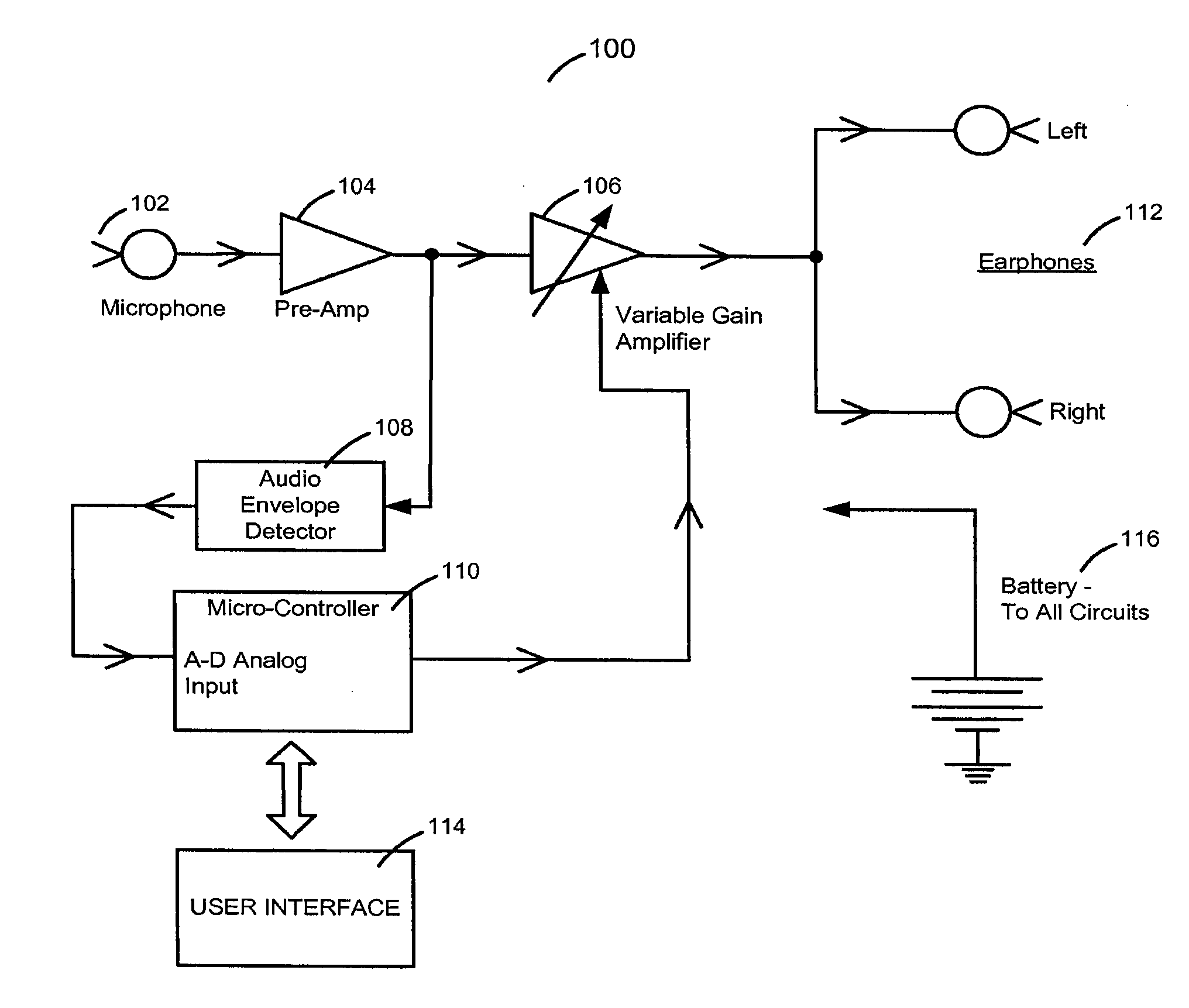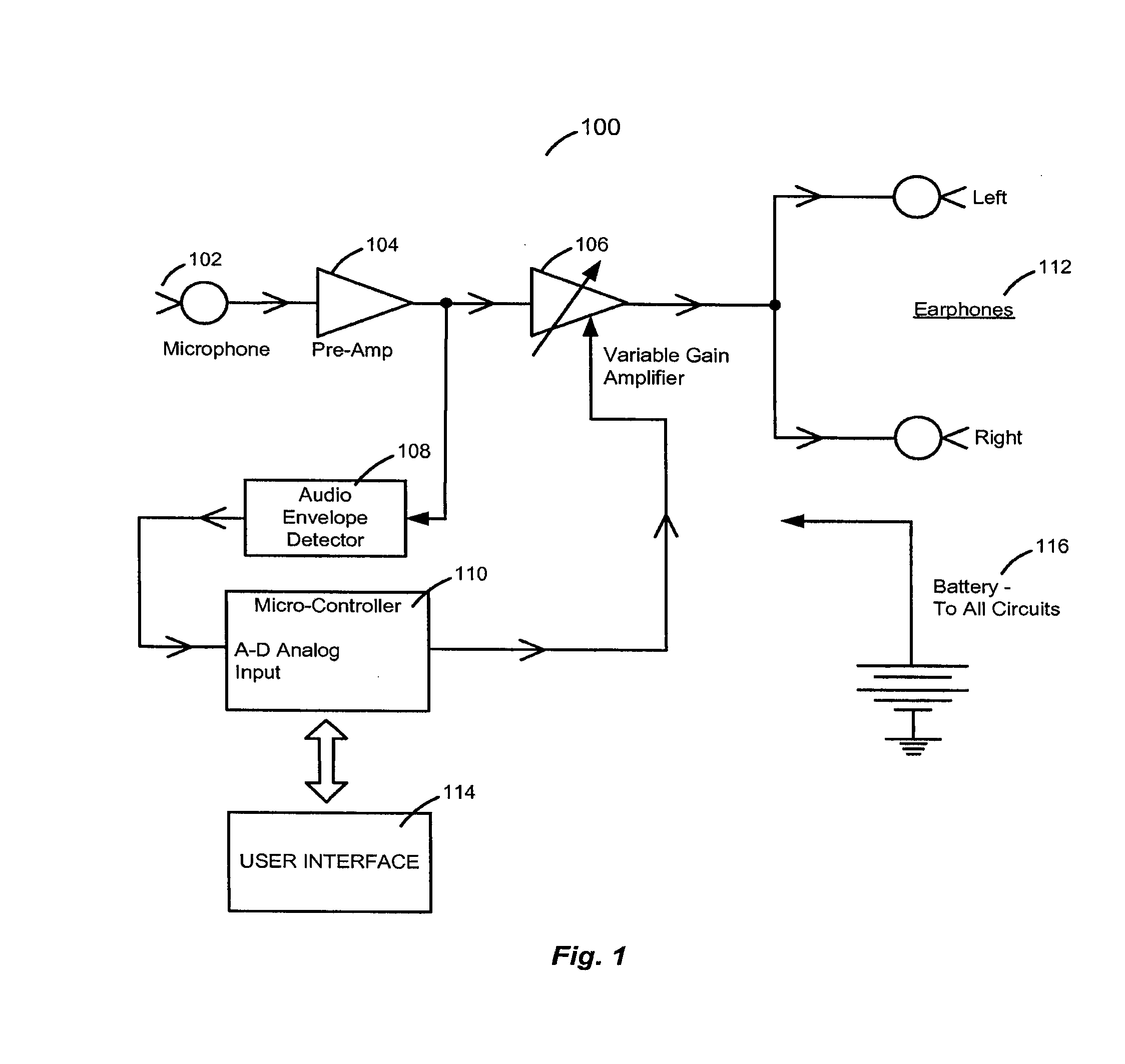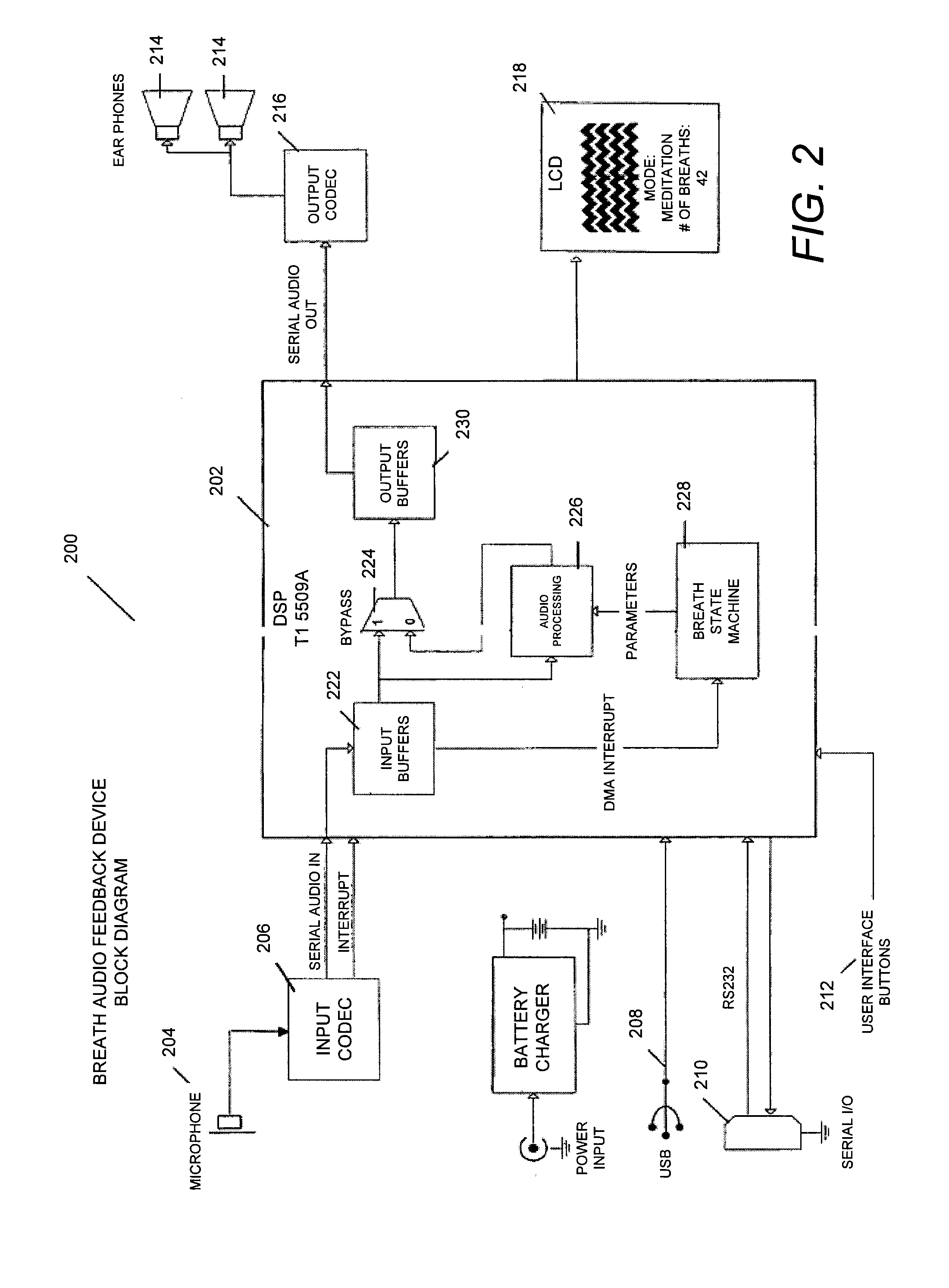Respiratory biofeedback devices, systems, and methods
a biofeedback device and respiratory technology, applied in the field of respiratory biofeedback devices, systems, and methods, can solve the problems of device not focusing on so as to improve the sleep quality of the user and improve the respiratory activity of the user
- Summary
- Abstract
- Description
- Claims
- Application Information
AI Technical Summary
Benefits of technology
Problems solved by technology
Method used
Image
Examples
Embodiment Construction
[0038]The present invention is directed towards respiratory related biofeedback devices, systems, and methods. Such biofeedback devices, systems, and methods can generate a respiratory signal in response to a user's respiratory activity (e.g., ordinary non-verbal sounds and / or motions of respiration, including snoring) for analysis, interpretation, and feedback to regulate and modify the user's respiratory patterns for health, fitness, performance and general well being. In many embodiments, a self-contained, wearable biofeedback device is provided. In many embodiments, a biofeedback system is provided that can interact with one or more users. In many embodiments, a biofeedback method is provided. Such biofeedback devices, systems, and methods can be used by a user, for example, to learn to modify and control breathing sound levels and patterns while awake or asleep.
[0039]Respiratory Biofeedback Devices
[0040]FIG. 1 shows an exemplary circuit diagram 100 of one embodiment of the brea...
PUM
 Login to View More
Login to View More Abstract
Description
Claims
Application Information
 Login to View More
Login to View More - R&D
- Intellectual Property
- Life Sciences
- Materials
- Tech Scout
- Unparalleled Data Quality
- Higher Quality Content
- 60% Fewer Hallucinations
Browse by: Latest US Patents, China's latest patents, Technical Efficacy Thesaurus, Application Domain, Technology Topic, Popular Technical Reports.
© 2025 PatSnap. All rights reserved.Legal|Privacy policy|Modern Slavery Act Transparency Statement|Sitemap|About US| Contact US: help@patsnap.com



